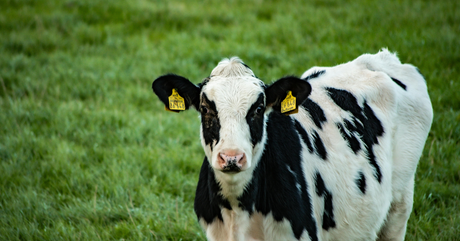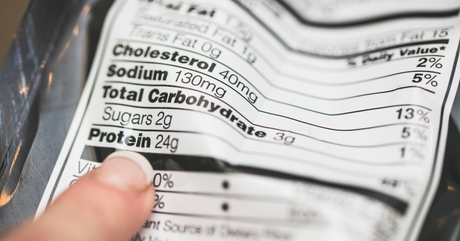Not all protein powder is created equal.
Walk into any supplement store and you'll see dozens of whey protein options ranging from $15 to $60+ per tub. The cheap stuff promises "25g of protein per scoop." The premium grass-fed versions cost more and claim superior quality.
So what's the real difference? Is grass-fed whey actually better, or is it just clever marketing?
Let's look at what the science actually says—because when it comes to fueling your body and optimizing your results, the details matter.
The Basics: What Is Whey Protein?
Whey is a byproduct of cheese production. When milk is processed into cheese, it separates into curds (solid) and whey (liquid). That liquid whey is then filtered and dried into the protein powder you know.
There are three main types:
1. Whey Concentrate (70-80% protein, contains some fat and lactose)
2. Whey Isolate (90%+ protein, minimal fat and lactose)
3. Whey Hydrolysate (pre-digested for faster absorption)
But here's what most people miss: the source of the whey matters just as much as the type.
Conventional Whey: The Standard (And the Problems)
Conventional whey comes from cows raised in concentrated animal feeding operations (CAFOs)—large-scale industrial dairy farms.
How Conventional Dairy Cows Are Raised:
Confined indoors with limited or no pasture access
Fed grain-based diets (corn, soy) instead of their natural diet of grass
Given hormones (rBGH/rBST) to increase milk production
Treated with antibiotics to prevent disease in crowded conditions
Exposed to pesticides and GMOs through their feed
The Nutritional Impact:
When cows eat an unnatural grain-based diet, the nutritional profile of their milk changes:
Lower omega-3 fatty acids
Higher omega-6 fatty acids (pro-inflammatory)
Reduced CLA (conjugated linoleic acid), a beneficial fat linked to fat loss and muscle retention
Lower levels of fat-soluble vitamins (A, D, E, K2)
Potential hormone and antibiotic residues
You're not just getting protein—you're getting everything that cow was exposed to.
Grass-Fed Whey: The Premium Difference
Grass-fed whey comes from cows that graze on pasture and eat their natural diet: grass.
How Grass-Fed Cows Are Raised:
Pasture-raised with access to open fields
Fed 100% grass (their natural, species-appropriate diet)
No hormones (rBGH/rBST-free)
No routine antibiotics
Higher animal welfare standards
The Nutritional Advantage:
When cows eat grass, their milk becomes nutritionally superior:
Higher omega-3 fatty acids (up to 5x more than conventional)
Better omega-6 to omega-3 ratio (less inflammatory)
2-5x more CLA, which supports fat loss and lean muscle retention
Higher levels of fat-soluble vitamins (especially K2 and beta-carotene)
More antioxidants like glutathione and superoxide dismutase
Cleaner product with no hormone or antibiotic residues
Bottom line: Grass-fed whey isn't just "cleaner"—it's nutritionally superior.
The Science: Does Grass-Fed Whey Actually Perform Better?
1. Omega-3 to Omega-6 Ratio
Research shows that grass-fed dairy has a significantly better omega-3 to omega-6 ratio compared to conventional dairy.
Why it matters: Omega-6 fatty acids (abundant in grain-fed dairy) promote inflammation when consumed in excess. Omega-3s reduce inflammation, support recovery, and improve cardiovascular health.
For athletes and lifters: Better omega ratios mean better recovery, less joint pain, and improved body composition.
2. CLA (Conjugated Linoleic Acid)
Grass-fed dairy contains 2-5 times more CLA than conventional dairy. CLA has been shown in studies to:
- Support fat loss while preserving lean muscle
- Improve insulin sensitivity
- Reduce inflammation
- Support immune function
Translation: Grass-fed whey doesn't just build muscle—it helps you stay lean while doing it.
3. Antioxidants and Immune Support
Grass-fed whey is richer in:
Glutathione (the body's master antioxidant)
Immunoglobulins (support immune function)
Lactoferrin (antimicrobial and anti-inflammatory properties)
For hard-training individuals: This means better recovery, reduced oxidative stress, and a stronger immune system.
4. Cleaner = Better Long-Term Health
No hormones. No antibiotics. No pesticide residues from GMO feed.
When you're consuming 1-2 scoops of protein daily, those trace compounds add up over time. Grass-fed whey minimizes your exposure to substances that can disrupt hormones, gut health, and overall wellness.
"But Does It Taste Different?"
Yes—and that's actually a good sign.
Grass-fed whey often has a richer, creamier texture and a slightly more natural, less processed taste. Some people describe it as having a subtle "dairy" flavor compared to the ultra-bland taste of heavily processed conventional whey.
If your protein tastes like cardboard, that's not a feature—it's a red flag.
At Rock Solid Nutrition, our Grass-Fed Whey is minimally processed to preserve the natural nutrients and flavor. We don't load it with artificial flavors, dyes, or sweeteners to mask poor-quality protein.
Real food tastes like real food.
The Cost Question: Is Grass-Fed Whey Worth It?
Let's be honest: grass-fed whey costs more.
Why?
- Grass-fed cows produce less milk (they're not pumped full of hormones)
- Pasture-raising is more expensive than confined feeding operations
- Higher welfare standards = higher costs
- Cleaner sourcing and testing = higher production costs
But here's the real question: What's the cost of not investing in quality?
If you're serious about:
- Building muscle
- Losing fat
- Optimizing recovery
- Supporting long-term health
- Avoiding hormones, antibiotics, and inflammatory fats
Then grass-fed whey isn't an expense—it's an investment in your results and your health.
You wouldn't put low-grade fuel in a high-performance engine. Why would you do it to your body?
Rock Solid Nutrition’s Grass-Fed Whey: What Makes Ours Different
At Rock Solid Nutrition, we don't cut corners.
Our Grass-Fed Whey:
✅ Sourced from 100% grass-fed cows (pasture-raised, hormone-free)
✅ rBGH/rBST-free (no growth hormones)
✅ No artificial dyes
✅ Minimally processed to preserve natural nutrients
✅Third-party lab tested for purity and quality
✅ Transparent labeling—you know exactly what you're getting
Available in delicious flavors that mix smooth and taste great—without the chemical aftertaste of conventional protein powders.
The Bottom Line
The grass-fed whey hype is real—it's a scientifically superior protein source.
Here's what you get:
- Higher omega-3s and better fat ratios
- More CLA for fat loss and muscle retention
- Greater antioxidant and immune support
- No hormones, antibiotics, or pesticide residues
- Cleaner, more natural nutrition
Conventional whey might be cheaper, but you're sacrificing quality, nutrition, and long-term health.
If you're putting in the work in the gym, eating clean, and prioritizing recovery, why would you settle for low-quality protein?
Your body deserves better. Your results deserve better.
Choose Grass-Fed Whey. Choose quality. Choose Rock Solid.

Ready to Upgrade Your Protein?
Experience the difference with **Rock Solid Nutrition’s Grass-Fed Whey**—clean, powerful, and designed for real results.










